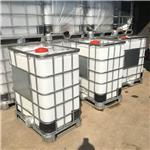Toxicity of Decane
Decane is an alkane hydrocarbon with the chemical formula C10H22. Although 75 structural isomers are possible for decane, the term usually refers to the normal-decane ("n-decane"), with the formula CH3(CH2)8CH3. All isomers, however, exhibit similar properties and little attention is paid to the composition.These isomers are flammable liquids.

Uses
Decane is a constituent in the paraffin fraction of petroleum and is also present in low concentrations as a component of gasoline. It is used as a solvent in organic synthesis reactions as a hydrocarbon standard in the manufacture of petroleum products, in the rubber industry, and in the paper processing industry, and as a constituent in polyolefin manufacturing wastes. Decane is a flammable liquid (at room temperature) that is lighter than water.
Environmental Fate
If released to air, n-decane will exist solely as a vapor in the ambient atmosphere. Vapor-phase n-decane will be degraded in the atmosphere by reaction with photochemically produced hydroxyl radicals, the half-life for this reaction in air is approximately 11.5 h.
Based on n-decane’s vapor pressure, it may volatilize from
dry soil surfaces. In biodegradation studies in soil, hydrocarbons
with molecular weights equivalent to or lower than
decane disappeared from the soil in both active and sterile
treatments by the first sampling time (5 days), indicating that
evaporation was a major removal process. Decane is expected
to have low to no mobility in soil based on estimated organic
carbon partition coefficient (Koc) values in the range of 1700–
43 000. Volatilization from moist soil surfaces is expected to be
an important fate process based on a Henry’s law constant of
5.2 atm m3 mol-1, which is calculated from n-decane’s vapor
pressure and water solubility. Adsorption to soil, however,
would be expected to attenuate due to volatilization.
Mechanism of toxicity
The mechanism of toxicity is suspected to be similar to other solvents that rapidly induce anesthesia-like effects, that is a ‘nonspecific narcosis’ due to disruption (solvation) of the integrity of the cellular membranes of the central nervous system.Decane is generally considered to be relatively nontoxic compared to effects seen following exposure to other aliphatic hydrocarbons. This is probably due to the fact that it is less volatile than the shorter chain aliphatic hydrocarbons (e.g., pentane or heptane) and may not be as readily transferred across either the pulmonary alveoli or the blood–brain barrier. If it is aspirated into the lungs, however, n-decane will cause adverse effects similar to those seen with petroleum distillates.
Using in vitro and/or microbial systems, n-decane has been
shown to be metabolized to decanol and is thus thought to be
readily biodegradable in the natural environment.
You may like
Related articles And Qustion
Lastest Price from Decane manufacturers

US $5.00-2.00/KG2024-09-19
- CAS:
- 124-18-5
- Min. Order:
- 1KG
- Purity:
- 99%
- Supply Ability:
- 10000kg

US $0.00/ml2023-02-24
- CAS:
- 124-18-5
- Min. Order:
- 0.1ml
- Purity:
- GC≥98%
- Supply Ability:
- 100 ml


